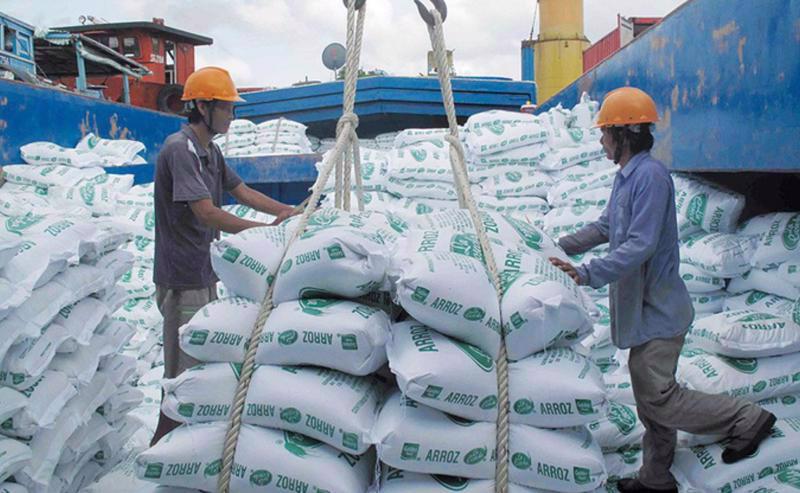
Building on the positive results achieved in 2024, the Philippine market continues to be a promising destination for Vietnamese exports in 2025, contributing to the sustainable development of bilateral trade relations.
Promising commodities in 2025
The year 2024 marked a significant milestone in trade relations between Vietnam and the Philippines, as bilateral trade turnover surpassed the 8 billion USD threshold for the first time, reaching 8.66 billion USD.
Vietnam's exports to the Philippines amounted to 6.19 billion USD, with a trade surplus of 3.72 billion USD—far exceeding the expected 3.5 billion USD. These impressive results highlight the vast potential of the Philippine market, opening up numerous opportunities for Vietnamese exports in 2025.
Last year, rice remained Vietnam's key export to the Philippines, with a trade value exceeding 2.6 billion USD. The demand for rice in the Philippines remains high, especially as the country heavily relies on food imports.
It is forecasted that in 2025, Vietnam’s rice exports to the Philippines will continue their upward trend and play a crucial role in bilateral trade relations.
Besides rice, coffee, cashew nuts, seafood, textiles, footwear, cement, chemicals, and electronic goods also hold significant growth potential.
Notably, Vingroup's decision to designate the Philippines as one of its key markets for expanding products and services presents new opportunities for Vietnamese goods, not only in the agricultural sector but also in processed industries and high-tech fields.
Other specialised products, such as labour protection equipment, medical supplies, pharmaceuticals, veterinary medicine, and vaccines, have also made promising progress in the Philippine market, thanks to trade promotion efforts by the Vietnam Trade Office in the Philippines.
With a population of nearly 120 million and a GDP exceeding 400 billion USD, the Philippines is one of the largest consumer markets in Southeast Asia. Despite limited domestic production, the country has a high demand for imported goods, particularly industrial products, electronics, vehicles, steel, and consumer goods. The advantages of geographical proximity and strengthening trade relations provide Vietnam numerous opportunities to boost exports to this market.
However, the Philippines is also a highly competitive market. Vietnamese goods face strong competition from China, Indonesia, Thailand, and other ASEAN countries.
This market also imposes technical barriers, such as trade defense tariffs on certain imports from Vietnam. Additionally, Filipino consumers tend to favor products from the US, Japan, and the Republic of Korea (RoK) over Vietnamese goods.
Moreover, the Philippines’ import-export policies are often subject to sudden changes, making it challenging for Vietnamese businesses to access the market. Certain agricultural products, such as fresh flowers, vegetables, fruits, and fresh meat, have yet to be fully opened to Vietnamese exports, limiting the diversification of export items.
Solutions to boost exports in 2025
To fully capitalise on the potential of the Philippine market, the Vietnam Trade Office in the Philippines recommends that Vietnamese businesses adopt appropriate market entry strategies, enhance product quality, build strong brands, and increase competitiveness.
In particular, improving product designs, diversifying offerings, and strengthening promotional activities in the Philippines are crucial factors that will enable Vietnamese enterprises to penetrate this market more effectively.
Additionally, relevant authorities should continue supporting businesses by advancing bilateral negotiations, removing trade barriers, and fostering cooperation in logistics and supply chains.
Organising trade promotion delegations, fairs, and exhibitions in the Philippines will help Vietnamese companies connect with local partners, understand market demand, and expand distribution channels.
The Vietnam Trade Office in the Philippines also plays a vital role in providing market insights, assisting businesses in finding partners, facilitating trade connections, and addressing challenges related to import-export procedures.
Source: Nhan Dan News
Share: